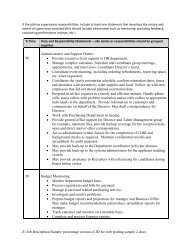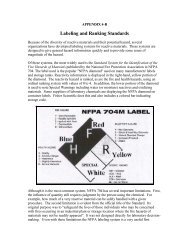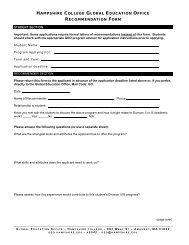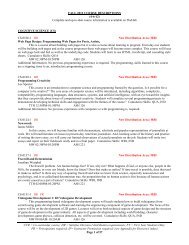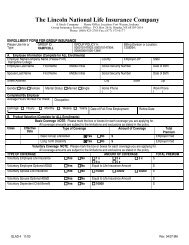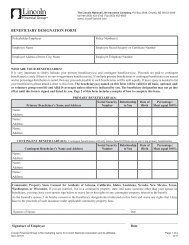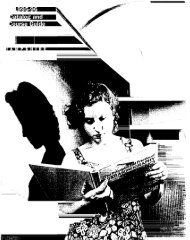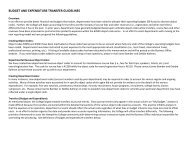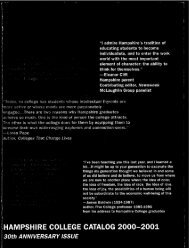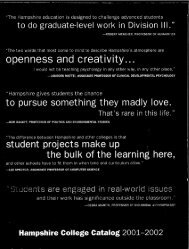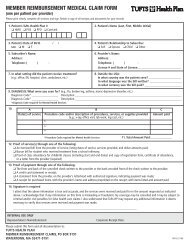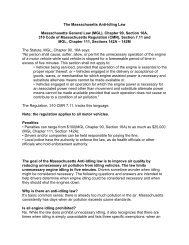school of social science - Hampshire College
school of social science - Hampshire College
school of social science - Hampshire College
Create successful ePaper yourself
Turn your PDF publications into a flip-book with our unique Google optimized e-Paper software.
culcural perspective on biomedical categories and methods <strong>of</strong><br />
investigation.<br />
FIVE COLLEGE ASTRONOMY<br />
COURSE LIST<br />
UNIVERSITY<br />
ASTFC 113<br />
THE SOLAR SYSTEM<br />
William Dent<br />
AMHERST<br />
ASTFC 1J4<br />
STARS AND GALAXIES<br />
Eugene Tademaru<br />
SMITH<br />
ASTFC 224H<br />
STELLAR ASTRONOMY<br />
Richard White<br />
UNIVERSITY<br />
ASTFC 226<br />
COSMOWGY<br />
Stephen Schneider<br />
AMHERST<br />
ASTFC 330<br />
SEMINAR: TOPICS IN ASTROPHYSICS<br />
George Greenstein<br />
UNIVERSITY<br />
ASTFC 451H<br />
STARS AND STELLAR EVOLUTION<br />
David Van Blerkom<br />
COURSE DESCRIPTIONS<br />
UNIVERSITY<br />
ASTFC 113<br />
THE SOLAR SYSTEM<br />
William Dent<br />
Introductory course for <strong>science</strong>, engineering and astronomy<br />
majors. Topics include physical characteristics <strong>of</strong> the<br />
earth, moon, planets, asteroids, and comets-their motions<br />
and gravitational interactions. Recent discoveries <strong>of</strong> space<br />
probes relative to formation <strong>of</strong> the solar system and origin <strong>of</strong><br />
life. Prerequisite: high <strong>school</strong> algebra. MWF 1:25 p.m.-2:50<br />
p.m. Class begins Wednesday, September 3.<br />
AMHERST<br />
ASTFC 114<br />
STARS AND GALAXIES<br />
Eugene T ademaru<br />
Continuation <strong>of</strong> ASTFC 13; may be taken independently.<br />
Introductory course for <strong>science</strong>, engineering, and<br />
astronomy majors. Topics include stellar evolution, pulsars.<br />
black holes, galactic structure. and cosmology. Prerequisite:<br />
higb <strong>school</strong> algebra. TTh 2:30 p.m.-3:45 p.m. Class begins<br />
Thursday, September 4.<br />
59<br />
SMITH<br />
ASTFC224H<br />
STELLAR ASTRONOMY<br />
Richard White<br />
The basic observational properties <strong>of</strong> stars will be<br />
explored in an experimental format relying on both telescopic<br />
observations and computer programming exercises. No<br />
previous computer programming experience is required.<br />
Prerequisites: one semester <strong>of</strong> calculus. one semester <strong>of</strong><br />
physics. and one introductory astronomy class. MW 2:30<br />
p.m.-5:15 p.m. Classes begin Wednesday, September 3.<br />
UNIVERSITY<br />
ASTFC 226<br />
COSMOLOGY<br />
Stephen Schneider<br />
Cosmological models and the relationship between<br />
models and observable parameters. Topics in current astronomy<br />
that bear upon cosmological problems, including<br />
background electromagnetic radiation, nucleosynthesis. dating<br />
methods. determinations <strong>of</strong> the mean density <strong>of</strong> the universe<br />
and the Hubble constant, and tests <strong>of</strong> gravitational theories.<br />
Discussion <strong>of</strong> some questions concerning the foundations <strong>of</strong><br />
cosmology and its future as <strong>science</strong>. Prerequisites: one<br />
semester <strong>of</strong> calculus and one semester <strong>of</strong> a physical <strong>science</strong>.<br />
TTh 2:30 p.m.-3:45 p.m. Class begins Thursday, September<br />
4. ASTFC 25 Galactic and Extragalactic Astronomy will be<br />
taught in alternate years wich ASTFC 26.<br />
AMHERST<br />
ASTFC 330<br />
SEMINAR: TOPICS IN ASTROPHYSICS<br />
George Greenstein<br />
Devoted each year to a particular topic or current<br />
research imerest. this course will commence with a few<br />
lectures in which an observadonal and a theoretical problem is<br />
laid out, but then quickly move to a seminar format. In class<br />
discussions a set <strong>of</strong> problems will be formulated, each<br />
designed to illuminate a significant aspect <strong>of</strong> the topic at<br />
hand. The problems will be significant in difficulty and broad<br />
in scope: their solution, worked out individually and in class<br />
discussions, will constitute the real work <strong>of</strong> the course.<br />
Students will gain experience in both oral and wriuen<br />
presentation.<br />
Topics vary from year to year. Prerequisites: one <strong>of</strong> 224,<br />
351 or 352. MW 2:30 p.m.-3:45 p.m. Class begins Thursday,<br />
September 4.<br />
UNIVERSITY<br />
ASTFC 451H<br />
ASTROPHYSICS I: STARS AND STELLAR<br />
EVOLUTION<br />
David Van Blerkom<br />
The application <strong>of</strong> physics [0 the understanding <strong>of</strong><br />
astronomical phenomena. Physical principles governing the<br />
properties <strong>of</strong> stars, their formation, and evolution. Radiation<br />
laws and the determination <strong>of</strong> stellar temperatures and<br />
luminosides; Newton's laws and the determination <strong>of</strong> stellar<br />
masses; hydrostadc equation and the thermodynamics <strong>of</strong> gas<br />
and radiation; nuclear fusion and stellar energy generation;<br />
physics and degenerate matter and the evolution <strong>of</strong> stars to<br />
white dwarfs. neutron stars, or black holes; nucleosynthesis in<br />
supernova explosions; dynamics <strong>of</strong> mass transfer in binary



